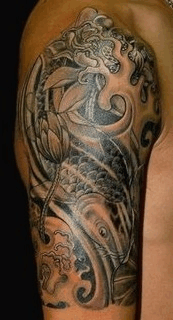For the author promoting a book, there is a distinct hierarchy of radio outlets. At the top are the nationally syndicated NPR shows, such as
All Things Considered,
The Diane Rehm Show, and
Fresh Air with Terri Gross. Just below this are a host of regional NPR outlets, like Wisconsin Public Radio, KQED in San Francisco, or New Hampshire Public Radio. Both these levels of interview are typically done in a studio with high tech equipment, so there is little that can go wrong. You can, of course, be really boring or make some dreadful mistake, but because you are in a controlled environment, technical problems are kept to a minimum.
However, once you drop below these upper levels of radio, there is a great sea of less stellar outlets. Slogging your tome could involve trying to summarize 300+ pages in a 10-minute interview with a morning drive host from Wyoming or having the luxury of forty minutes to talk about your book with someone whose podcast may not be heard by more than a dozen people beyond his closest relatives. These lower-tier interviews are usually done by phone, at home or in the office, and this is where the high jinx can ensue.
The most important thing is that your surroundings be quiet. We have all heard the radio caller whose dog starts to bark incessantly or whose child begins screaming in the background. These hazards do not pose a problem for me because I have no pets or young children at home, and since I am a college professor, you might imagine my office would be quiet enough for radio interviews. Not so. Several times a day in the winter months, the radiators in my office bang so ferociously it is difficult to think, much less talk on the phone. As a result, I arrange to do most of my phone interviews at home. Unfortunately, recent scheduling problems have forced me to do a few interviews in the office, and because we are still in the heating season, I risked sending banging sounds out over the airwaves. Furthermore, my luck has been rather poor lately. So far during the promotion of my new book
Going Broke I have done three phone interviews in the office, and the banging pipes have managed to make an unwelcome appearance for two of these.
When the pipes bang, I can never decide the best course of action. Of course, I am trying very hard to concentrate on what the interviewer is saying and what my next response will be. Meanwhile the pounding is getting louder and louder, and I am cupping my hand around the mouthpiece of the phone in an effort to block the sound of the pipes while retaining the ability to talk on the phone. Should I apologize to the interviewer? There is always the slim chance that the phone is not picking up the sound of the pipes and I will be apologizing for something that the listeners cannot hear. So usually I just carry on without mentioning anything, and so far, the radio hosts have done the same. However, in one case the radio host ended the interview rather abruptly. It is possible he had run out of time or was not getting as much out of the interview as he had hoped, but I had the distinct impression the loud clanging sounds in the background had something to do with it.
In contrast, home is usually a very safe environment. However, sometimes I am my own worst enemy. Last week I had a long podcast interview, and earlier in the morning I had been baking muffins. I used a digital kitchen timer, and I had taken the muffins out of the oven just minutes before the interview. Things were going great. The host liked the book and posed many thoughtful questions, but about twenty minutes into the interview, the digital timer began to beep. I thought I had turned it off, but instead, I must have restarted it. I always use a wired phone for interviews because wireless phones have poorer sound quality, but this means I am tied to my spot. As a result, there was no way for me to get to the timer to turn it off without leaving the phone behind, so there was nothing I could do.
After a moment the beeping stopped. This must have been the 5-minutes-to-go warning feature. Unfortunately, I was not finished with the interview, and five minutes later, the beeping returned. This time the sound kept going and going, as if shouting to tell me my muffins were burning in the oven. I knew there was nothing I could do, so I cupped my hand over the telephone mouthpiece and dove behind a couch to shield myself from the sound. Eventually the timer gave up, and the interview ended. Perhaps as a result of clever editing, the final podcast showed no evidence of interruption by kitchen timer, but I will never forget cowering behind the couch while I tried to speak intelligently about my brilliant new book.





